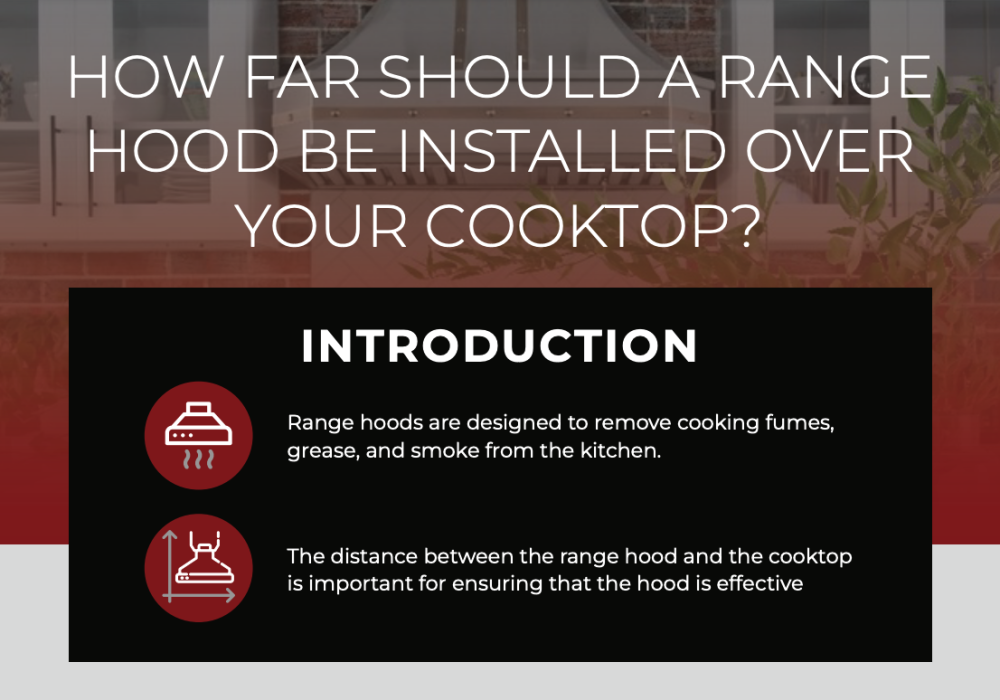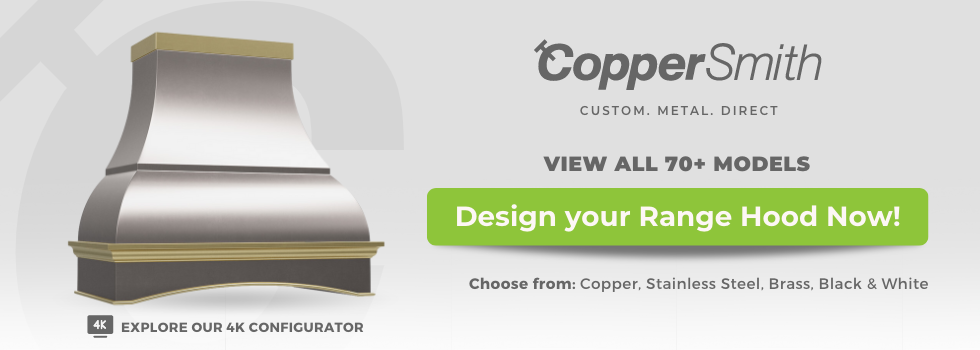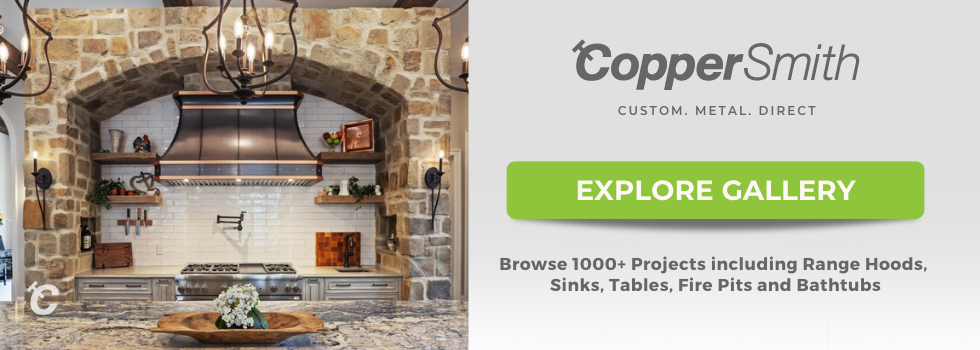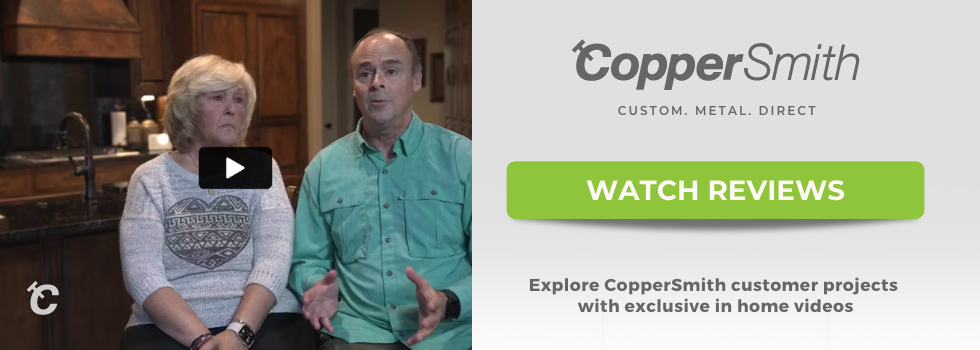Range Hood Height Calculator
A kitchen is perhaps one of the most important places in the house. It is there that some of the most intimate meals are made and memories created. As such, everyone wants their kitchen to be well-fitted, and to have all the necessary components in place, and fully functional. Since the primary function of the kitchen area is meal preparation, there is a clear need for proper ventilation, since the processes of cooking involve the production of hot, stuffy air and grease.
Ventilating your kitchen, especially the cooktop/stovetop, therefore, takes center stage. In the past, people cooked their meals under long chimneys, which provided an outlet for smoke, grease, and hot air, thus aiding ventilation.
Modern times have seen the kitchen area reduced in size, and with millions living in apartment buildings, the idea of chimneys is inconceivable. The installation of range hoods provides ventilation in kitchens in both commercial and domestic settings. The efficiency of these range hoods, together with maintenance, depends on how well they are installed. One of the most critical factors to consider during range hood installation is the height above the cooktop. In determining how high the range hood should be positioned above the cooktop, several considerations have to be made.
How does a Range Hood work?
Before we delve into the technicalities of a range hood installation, it is vital to understand how range hoods work. This knowledge will provide footing for the other considerations that we will discuss in this article.

As mentioned earlier, the cooking process produces grease and steam. These rise towards the ceiling and, as with all buoyant elements, expand as they rise. The range hood helps expel these elements by sucking them in and directing them out of the kitchen. Since the grease and steam expand as they rise, it means the higher your range hood is installed, the wider it will need to be to expel these elements effectively.
Now that we have seen how a range hood works let us look at the factors to consider when determining the installation height.
What type of cooktop do you have?
Before deciding how high your range hood should be installed, you must consider the type of cooktop being used. Different kinds of cooktops may require different range hood heights. For example, a gas barbecue will discharge more grease than an electric cooker, and this could call for more technical considerations in determining the correct height. Let’s look at some of the different types of cooktops, and the recommended range hood heights for each.
How much CFM for a gas range?
Gas cooktops, by their very nature, tend to generate a lot of hot, stuffy air during cooking. If you have a professional gas cooktop, you will need to be more careful since these have a higher burner output than traditional gas cooktops.

For the professional gas cooking ranges, the most common range hood is the 18” canopy wall hood. This type of range hood should be installed at the height of 30” to 36” above the cooktop. A different kind of range hood for professional gas cooking ranges is the vent hood insert/liner. It is designed to be installed inside a custom cabinet above the cooktop, and since most custom hoods are designed to match the kitchen cabinetry, the most common material is wood. This type of range hood requires a greater clearance from the cooktop due to the wood cabinet, and the recommended installation height is 36” above the cooking surface.
The traditional under cabinet hoods and the chimney-style hoods are also a bit common. These range hoods require at least 30” clearance from the cooktop to the bottom of the range hood. For the island kitchens, the freestanding/island style range hoods are installed. These are supported by the ceiling, as compared to the other models which are supported by the wall.
A wood style island range hood should have at least 36” clearance from the cooktop, while a stainless steel range hood will require a 30” clearance. To add to the height consideration for the island range hood, it is also recommended that the hood be a little wider than the cooktop. For example, if your cooktop is 30”, a recommended width for the range hood would be 36”.
How much CFM do I need for a electric cooktop?
Electric cooking ranges do not produce as much smoke and hot air as gas cooking ranges, and as a result, most people prefer installing a smaller vent hood rather than the professional range hoods. Since there is less heat, grease, and smoke escaping, the range hoods for electric cooking ranges can be installed at the same height as the gas range hoods, or even lower. However, the other considerations, such as the height of the cooking range and safety, have to be made when deciding on the best installation height.

What's the ideal height for a range hood?
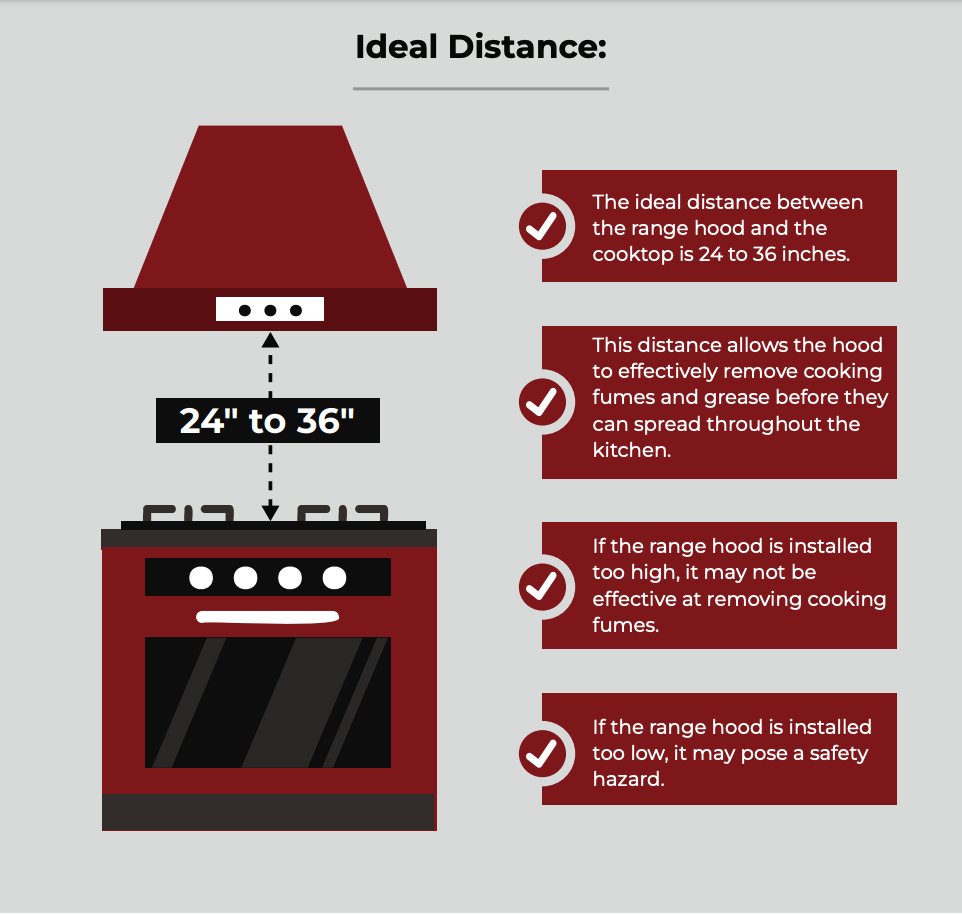
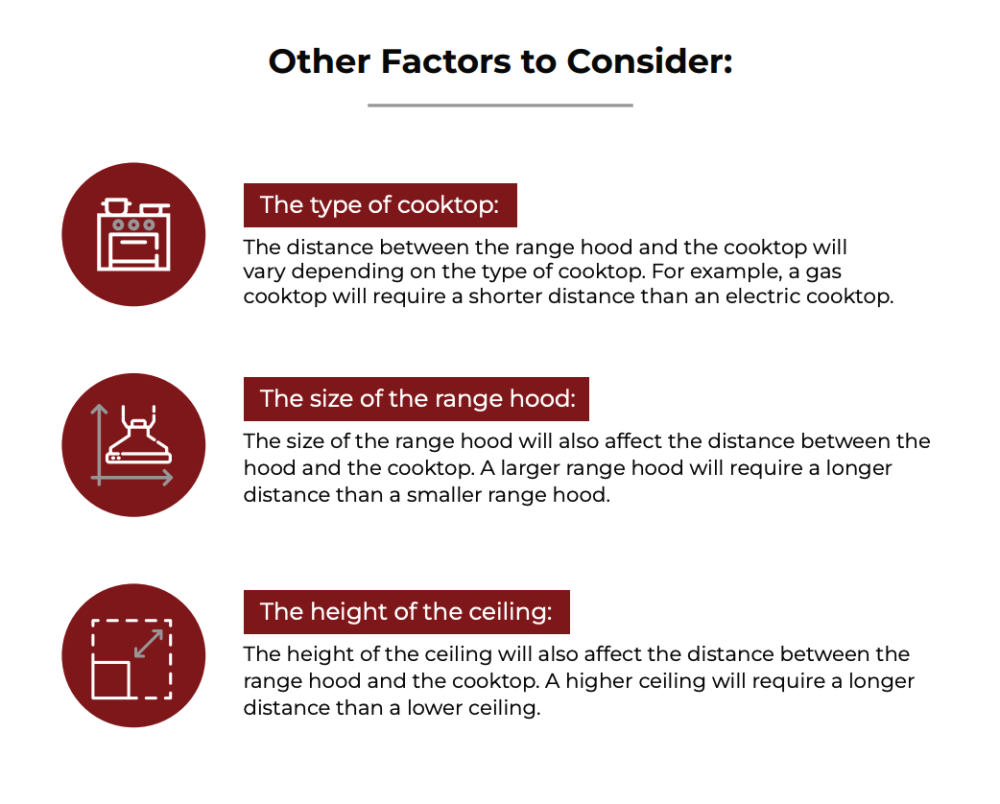
As the cooktop user, your comfort is paramount when determining the installation height for a range hood. You do not want to have the range hood blocking your movement around the cooktop, or constantly having to worry about bumping your head on the range hood when cooking. Most people will also prefer to have the range hood installed above eye level. It is important to note that installing the range hood where you are forced to work in uncomfortable postures poses a risk to your health. Most recommended installation heights will work for most people, but if you are one of the few who are taller than average, then you should consider your height when determining the installation height for your broan range hood.
What’s The Highest You Can Install a Range Hood?
You’ll normally have some flexibility in how high above the cooker you can place your range hood, but it’ll certainly need to be within the upper limit. A range hood should not be installed more than 36” above the cooking surface. While it’ll still be somewhat effective at that height, the decreased ventilation capabilities will mean that you won’t get all the benefits of adding a range hood to your kitchen.
How wide should my range hood be?
The range hood’s capture area is an important consideration when determining the installation height. Where the range hood’s capture area is larger than the cooktop below, it means the hood can extract all steam and smoke from a lower height more effectively, and vice versa.

Size of Cooking Range
The size of the cooking range is a major factor to consider while determining the installation height for your range hood. The more expansive the cooking range, the more the steam and grease produced during cooking are likely to expand and spread over a large surface area. This will, in turn, affect the efficiency of the range hood depending on the installation height.
Do I really need a range hood for safety?
When installing a range hood, safety considerations are critical to determining how high it should be installed. As mentioned earlier, the type of cooktop is a vital factor to consider. If the range hood is not installed correctly, it presents a risk of fire since the electric components of the hood may be compromised by intense heat.

On safety, the best way to avoid range hood safety risks is by maintaining the hood in proper working condition. An excellent way to maintain the range hood is by keeping it clean. If your range hood is installed at a height where you will not be able to clean it properly, then there is the risk of accumulation of grease and oil in the long term, which could cause fire damage.
What is CFM? It's Cubic Feet per Minute.
The measure of power for range hoods is the cubic feet per minute or CFM. The range hood CFM is a primary factor to consider when determining how high the range hood should be installed, as it is the best measure for the hood’s efficiency. If the range hood has a high CFM capability, then it can be installed higher up, and vice versa. If the hood is mounted too high, the distance will affect its efficiency in extracting smoke and steam.
It is therefore clear that if you want to install your range hood high, you will need more CFM. Some experts suggest that for every 3 inches above the recommended installation height, your range hood will require an additional 100CFM to work efficiently.
How high is your cooktop?
One of the most commonly ignored factors when determining the correct height for range hood installation is the height of the cooktop. It is essential to note the height of the cooktop from the floor to the top, and consider it while installing the range hood to ensure that people don’t go bumping into the hood’s corners while cooking. Generally speaking, your cooktop will be 36" off the floor!
If a cooktop is above average height, the range hood height should also be raised to match. However, the distance between the cooktop and the range hood should be maintained within the recommended limits.
The Kitchen Layout
The kitchen layout plays a significant role in determining the height of your range hood installation, as it determines how much space you have at your disposal. Different kitchen layouts also mean different dynamics in terms of steam and grease dispersion, and this, in turn, means different range hood installation heights.

Although the kitchen layout does not directly affect the range hood installation heights, it definitely alters the way the hood is installed and its efficiency. For example, a range hood for a cooktop that is backed up to the wall will not be installed in the same way as a range hood for an island-style cooking range.
Manufacturer’s Manual
As with every product, range hoods come with installation manuals from the manufacturer. These manuals outline the recommended conditions for maximum efficiency and should be among the central guides to how high the hood can be installed. It is important to consider the manual requirements along with all the other considerations to ensure the range hood is installed properly. For example, a range hood installation manual for a SMEG range hood recommends that the distance between the cooktop and the bottom of the range hood should be 65cm unless the cooktop installation manual dictates otherwise. These recommendations are an excellent place to start when determining the height at which your range hood will operate efficiently and safely.
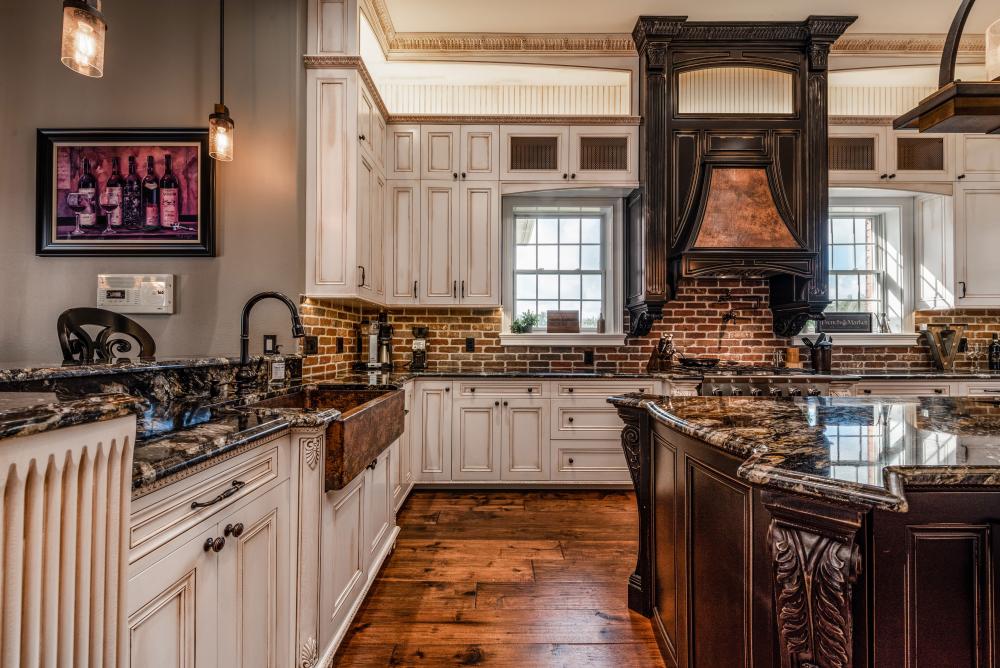
Regional Building Regulations
In addition to all the considerations mentioned above, it is imperative to consider your region’s building regulations and guidelines on the installation of range hoods. In most states in the USA, the average height from the top of the cooking range to the bottom of the range hood is 18”, and it is the minimum height clearance required by most building codes.
Another crucial factor in installing your range hood at the recommended height is the accurate measurement of the distance. Taking the correct measurements before installation is the first step towards installing the hood at the proper height, and should be undertaken with a lot of care and skill. It is also worth mention that you should get the correct type of range hood for your kitchen since slight variations in specifications will ultimately lead to incorrect installation processes and financial loss.

It is also important to consider the type of food that you intend to use your cooktop for. Some foods such as fish, bacon, and seafood will require venting more than other foods, and consideration should be made to that effect while determining the installation height and type of range hood. If you are a lover of foods that require you to wok, then you will want to consider this when installing your cooktop and range hood, and ensure you leave enough clearance for your cooking activities. As mentioned earlier, ease of cleaning and maintenance is an important factor as well, to avert the risk of fires and accumulation of grease.
The best way to know how high your range hood should be installed above the cooktop is to engage a professional kitchen designer. When you engage an expert, you will be guaranteed that due consideration of all the factors discussed in this article is done and that proper installation procedures are followed. This way, you will not have to worry about having your range hood hanging sideways, or the vent system not working properly due to poor installation.
The Risks of Incorrectly Placed Range Hoods
Your range will work effectively only if it’s placed at the right height. Incorrect installation may result in a whole host of avoidable problems that could have far-reaching consequences. For example, some of the common risks of an incorrectly placed range hood include:
Damage to the Hood
Anything that’s placed too close to a hot surface is liable to become damaged. If your range hood is close to your cooking surface then, over time, you may find that the outside of the hood range shows visible signs of damage. It’s also possible that the inner electrical circuits may suffer heat damage, which could cause problems that you cannot fix without replacing the range hood.
If you discover that your range hood is too close to your stovetop, then be mindful of how frequently you’re cooking, as well as the cooking temperature.
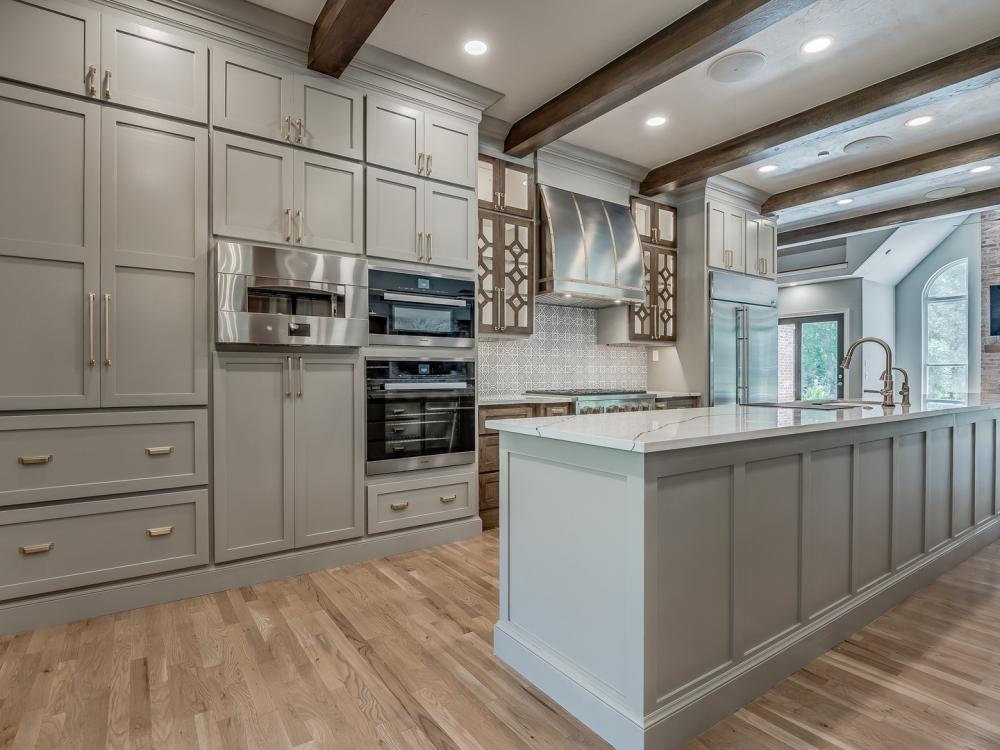
Fire Risks
Damage to the hood is the best-case scenario if it’s located dangerously close to the cooking surface. The worst-case scenario is a fire. Any electrical appliance that experiences extreme heat is liable to catch fire, and that includes your range hood. While it’s unlikely, it’s important to be aware of the risks, because even if you catch the fire early, there’s a high chance that your kitchen will suffer damage that must be repaired.
Increased Cleaning
The recommended installation height for a range hood allows it to do its job effectively without catching the grease, dirt, and grime that flies off the cooking surface. If your range hood is placed lower than it should be, then you’ll need to clean the hood more frequently. In some cases, the amount of grease it attracts will leave a stain that compromises the beauty of your range hood.

Uncomfortable Cooking
Even if the range hood isn’t low enough to be a worrying safety concern, you may find that it impedes your ability to cook comfortably. A range hood should be placed high enough that you don’t need to duck under it to cook your meals.
Motor Burnout
You’ll hope that your range hood works for many years to come. But if it’s placed too close to the cooking surface, then that’s unlikely to be the case. Your range hood will need to work extra hard to draw the hot air away from the kitchen, which could result in motor burnout. It’s possible to replace the range hood motor, but it’s not something that you’ll want to do frequently!
It Won’t Work Effectively
Range hoods can be beautiful, especially the copper range hoods we offer here at CopperSmith, but first and foremost, they should be functional. If your range hood is placed too high, then it won’t be able to do its job as well as it needs to do in order to be beneficial to your kitchen.
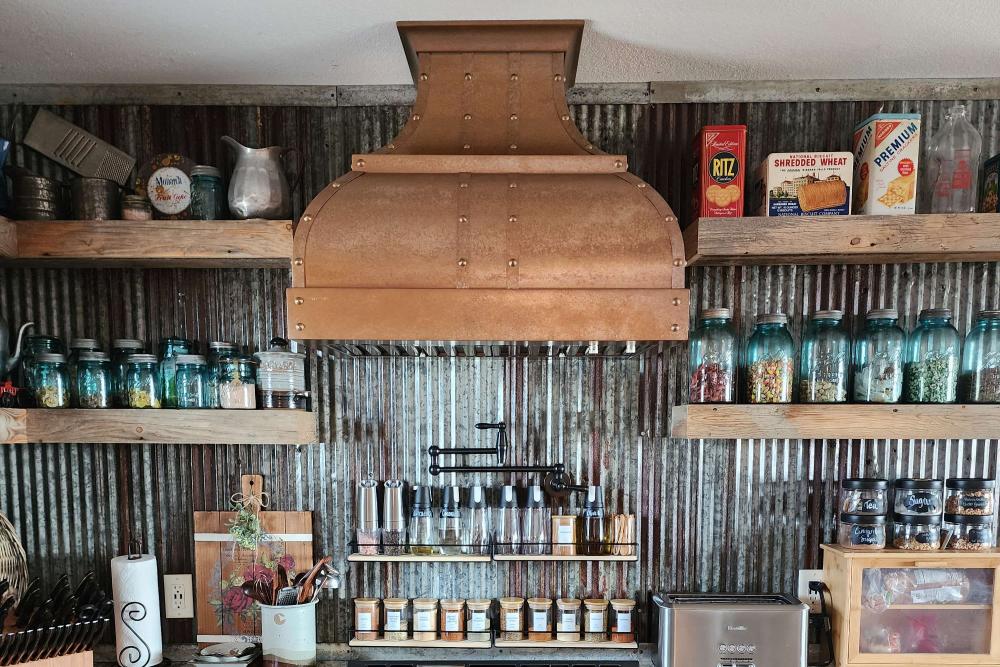
What About Outdoor Range Hoods?
So far on this page, we’ve discussed the correct placement of range hoods in a kitchen. However, there is another place you can install a range hood — in your yard! If you have an outdoor cooking space, then you may wish to install an outdoor range hood. This type of range hood has a different installation process than indoor ventilators and should be placed higher, approximately 36” to 42” above the cooking surface. This is because outdoor cooking appliances typically produce more smoke and heat than indoor cooking appliances, and thus more space is required so that the range hood can fully extract the fumes.
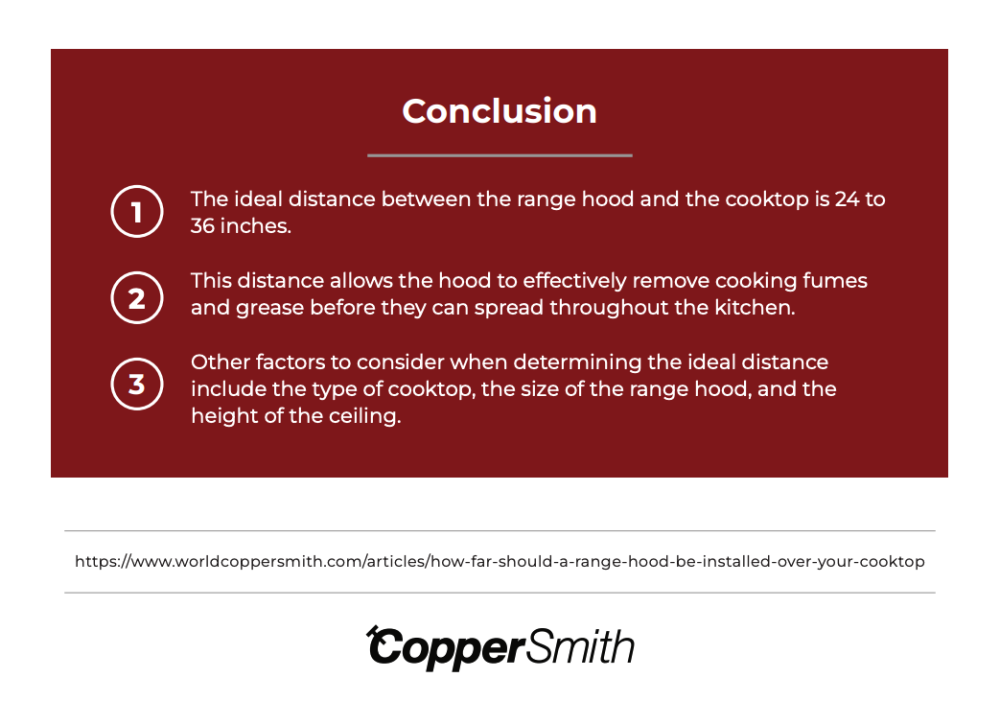
References:
- http://www.impalakitchens.com.au/what-height-to-put-a-rangehood/
- https://www.coolblue.nl/en/advice/distance-between-cooktop-and-range-hood.html
- https://blog.yaleappliance.com/how-high-do-you-hang-a-range-hood
- https://kitease.com/range-hood/range-hood-height
- https://www.smeg.com.au/smeg_au/docs/user_manuals/LIFTB900.pdf

